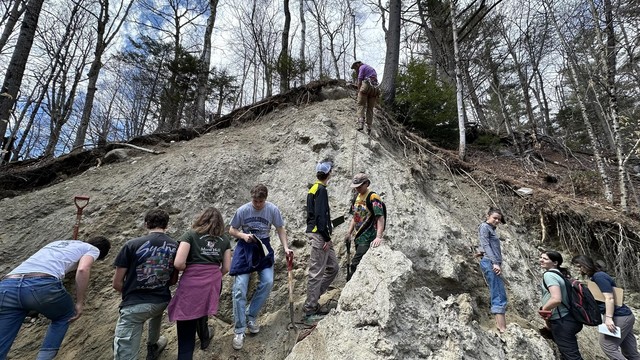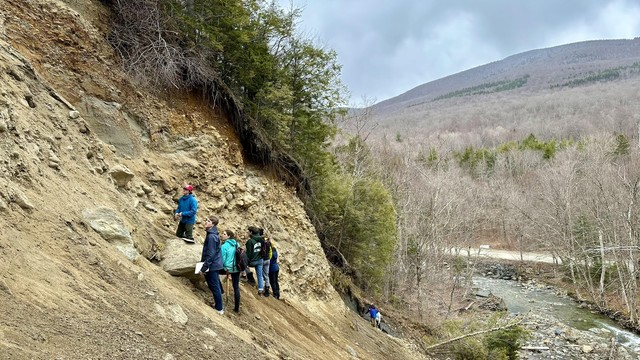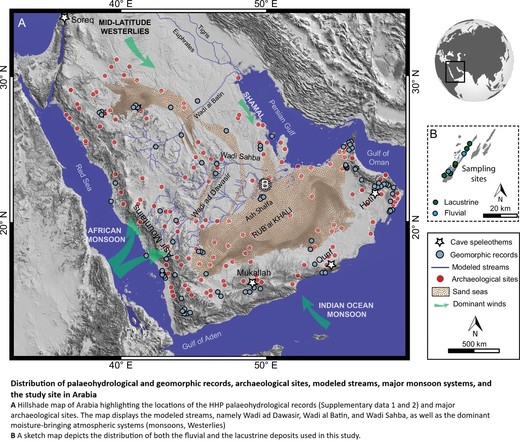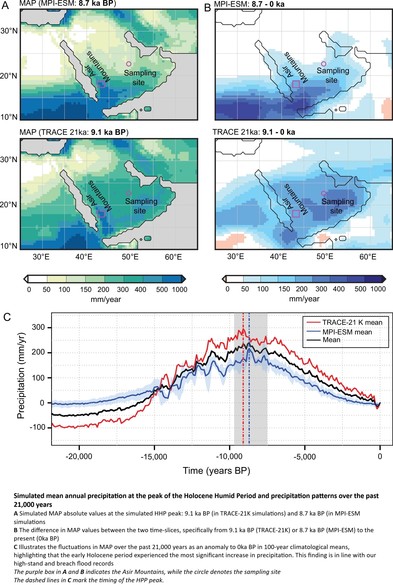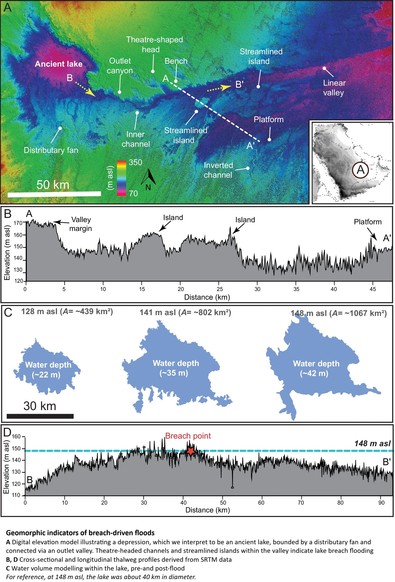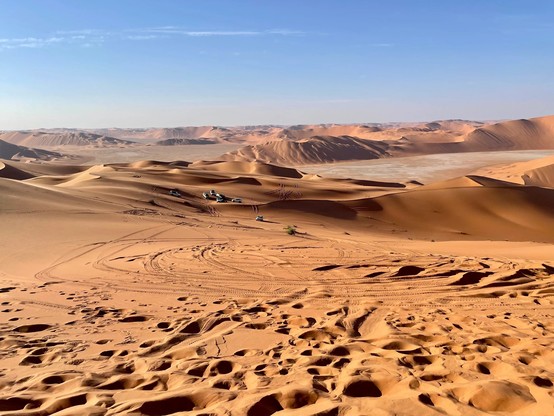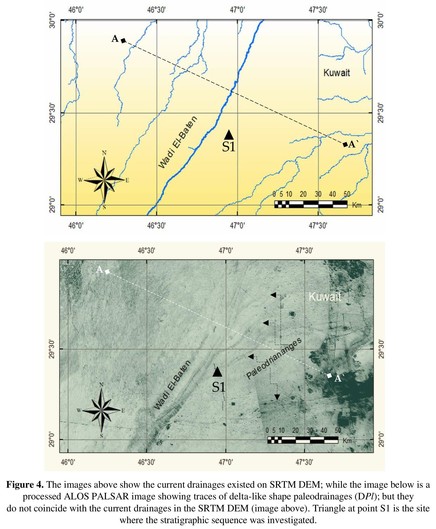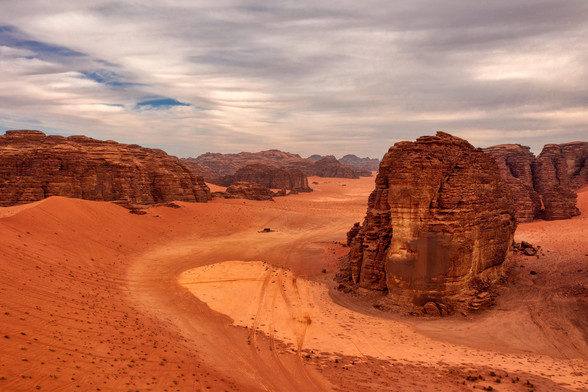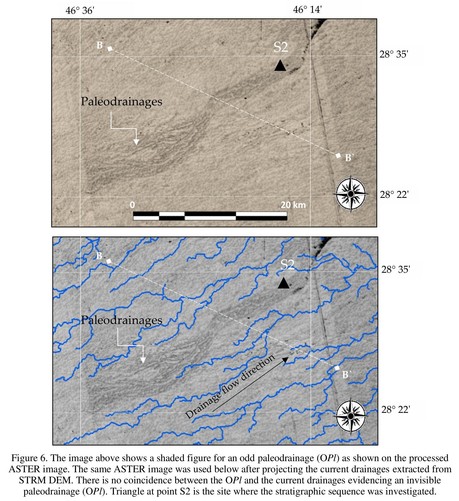Students in my Quaternary Geology course came at this exposure from the bottom up, and the top down -- a curious sequence of basal till overlain by silty lake sediments deformed by a later glacial readvance. #geology #earthscience #vermont #Quaternary #outside
Recent searches
Search options
#Quaternary
After gaining experience at a fairly straightforward site, students in my Quaternary Geology course have moved on to more complicated exposures. This one here reveals basal till beneath proximal subaqueous outwash that was deformed by a readvance. Great stuff! #vermont #geology #EarthScience #glacial #Quaternary #outside
Understanding Geological Time With Associate Professor Stijn Glorie [video]
--
https://youtu.be/H2M2ZuVe9pE?si=iTahPKcOe2q2Yhs5 <-- shared video
--
“A/Prof Stijn Glorie is a geochronologist at University of Adelaide who uses radio-isotope decay to date rocks, revealing Earth’s evolution and aiding insights into mountains, ores, and climate-tectonics links…”
#geology #time #learning #education #dating #age #epochs #understanding #rocks #structuralgeology #Quaternary #conception
Always a good day when friends have a good day! Out today in NATURE (!) from Monika Markowska - 8 million year record of recurrent humid phases in Arabia.
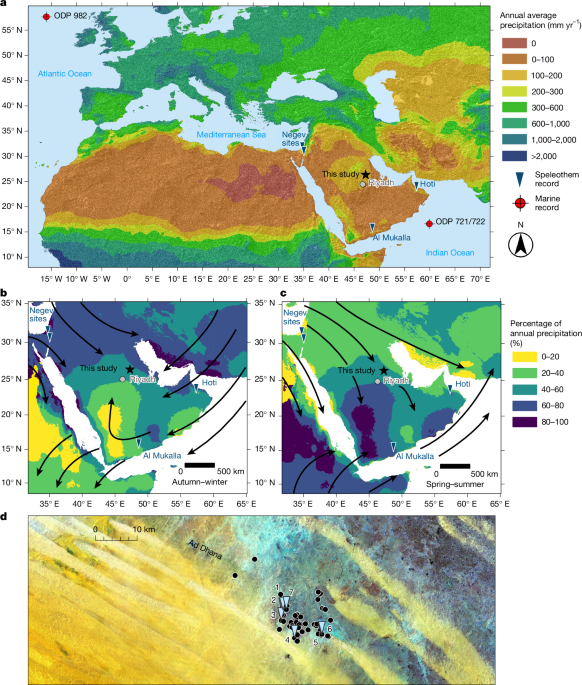
Ancient Lakes And Rivers Unearthed In Arabia's Vast Desert
--
https://phys.org/news/2025-04-ancient-lakes-rivers-unearthed-arabia.html <-- shared technical article
--
https://doi.org/10.1038/s43247-025-02224-1 <-- shared paper
--
#GIS #spatial #mapping #water #hydrology #quaternary #desert #geomorphology #landforms #geomorphometry #Arabia #climatechange #RubalKhali #SaudiArabia #holocene #model #modeling #spatialanalysis #spatiotemporal #earthsystemmodel #geology #lacustrine #fluvial #sediments #sedimentary #flood #flooding #lakes #AfricanMonsoon #rivers #paleohydrology #stratigraphy #remotesensing #landsat #earthobservation #dating #delta #cliff #terrace #rainfall #precipitation
Evidenced Paleodrainages In Desert Regions Of Saudi Arabia - Satellite Images With Field-Based Study
--
https://doi.org/10.21203/rs.3.rs-4959129/v1 <-- shared paper
--
#GIS #spatial #mapping #water #hydrology #streams #poroussediments #pebbles #RadarImages #SaudiArabia #MiddleEast #remotesensing #drainage #paleodrainage #desert #evidence #satellite #imagery #fieldwork #fieldchecked #Quaternary #Pleistocene #climatechange #geology #landform #geomorphology #arid #streamnetwork #PALSAR #ASTER #thermaldifferentiation #spatialanalysis #multispectral #sediment #lithology #hydromorphic #geomorphmetry #waterresources #usecase
Homo juluensis: Scientists discovered a new species of archaic human
A team of paleoanthropologists has introduced Homo juluensis, a newly identified hominin species. This species, whose name translates to “big head,” thrived in eastern Asia between 300,000 and 50,000 years ago, marking a significant addition to the Late Quaternary human lineage...
More information: https://archaeologymag.com/2024/12/homo-juluensis-new-species-of-archaic-human/
Follow @archaeology
And now, the Version of Record of my latest co-authored #scientific #publication led by Juan Ochando is out in #Quaternary Science Reviews:
https://doi.org/10.1016/j.quascirev.2024.109025
#Science
#ScienceMastodon #AcademicMastodon
#Paper #OpenAccess
#Archaeology #Paleoecology #Geochemistry #Palynology #Neandertal #Experiment
#Gibraltar #Cave #Hearth #Tar
#Biomarkers #Levoglucosan #PAHs #Retene #BPCAs #PyrogenicCarbon #Pollen #Phytoliths
https://mastodon.world/@nina_davtian/113554601654347588
An #IceAge is a period of long-term reduction in Earth's temperature, resulting in the expansion of continental ice sheets and alpine glaciers. These periods are characterized by significant changes in climate, sea levels, and ecosystems.
Earth is currently in the ice age called #Quaternary #Glaciation.
Wonderful to see 11 ARC Discovery Projects awarded to Quaternary projects in Australia! This must be a record for recent years/rounds.
Sleuthing thanks to Prof Simon Haberle at the ANU via the aqualist.
The first paper for our paper club is this recent one from McKay et al., presenting a thorough investigation of the (supposed?) 4.2 ka event. I'd read it when it was published, but just went through again in more detail, and what a good paper. Robust stats (of course, from this group), and they do a really nice job of building the case. I hope the group enjoys it!
Australian quaternarists and micropalaeontologists - applications for the Leanne Armand Travel Award are now open. Details on the #AQUA website: https://aqua.org.au/sample-page/the-leanne-armand-travel-award/
#Curtin uni is advertising an ongoing lectureship (level B, teaching and research) in Earth and Planetary Sciences. Pretty broad criteria, would suit someone doing #Quaternary sciene as well as more traditional minerals stuff.
Australasian quaternarists will be happy to see that the call for abstracts for #AQUA2024 has been opened! AQUA is also offering student travel awards - all the details are slowly emerging on both the website and the mailing list.
FYI Australasian quaternarists, there is AQUA news!
1. Membership is due (we run on the calendar year) - join or renew here: https://aqua.org.au/membership/become-an-aqua-member/
2. The AGM is coming up! If you have some ideas about how AQUA should be run, consider joining the executive - it's a friendly bunch. To stay abrest, join the mailing list: https://mailman.anu.edu.au/mailman/listinfo/aqualist
The deadline for #EGU24 abstract submission is fast approaching! If you work in Quaternary fire and hydroclimate, consider submitting to our session!
https://meetingorganizer.copernicus.org/EGU24/session/49382
#EGU24 #conference #quaternary #fire #fireEcology #Paleofire # palaeofire # palaeoclimate #paleoclimate
My art in 2023 (8/12)
August: Spring on the mammoth steppe. When the time came to do some art set in the Quaternary, I decided to depict a real life location and how it would have changed in the past few hundred thousand years. This spot is just west of Baden-Baden (which is in the glacier valley to the upper left), on the edge of the Schwartzwald. I also enjoyed depicting an ice age spring. It wasn’t always snow and ice.
Today, I have an invited #oral #presentation at #AGU23, session PP41A - #Advances in #Understanding the #Causes, Mechanisms, and #Impacts of #Quaternary Abrupt #Climate #Changes and Their #Implications for the #Future I Oral convened by Chijun Sun, Allison Lawman, and Sophia Macarewich!
You can also read my related #scientific #publication after my AGU23 talk or if you cannot attend it for any reason.
Davtian and Bard (2023) @PNASNews https://doi.org/10.1073/pnas.2209558120
I have been involved in a very exciting project over the last 3 years working with archaeologists from the universities of Stavanger and Bergen examining the likely consequences of the #Storegga #Tsunami on coastal communities in Norway over 8000 years ago. We model the Storegga #landslide and generated tsunami and the inundation at high-resolution at multiple sites along the coast of Norway. New #OpenAccess paper in #Quaternary #Science #Reviews: Walker et al. (2024)
https://doi.org/10.1016/j.quascirev.2023.108433


